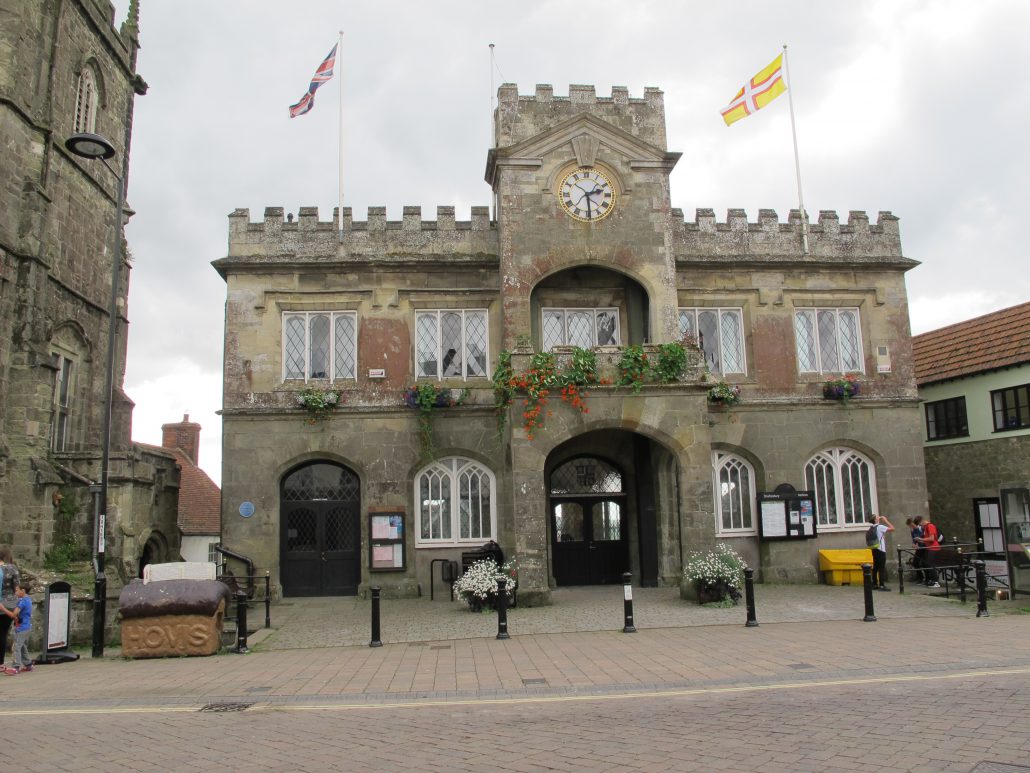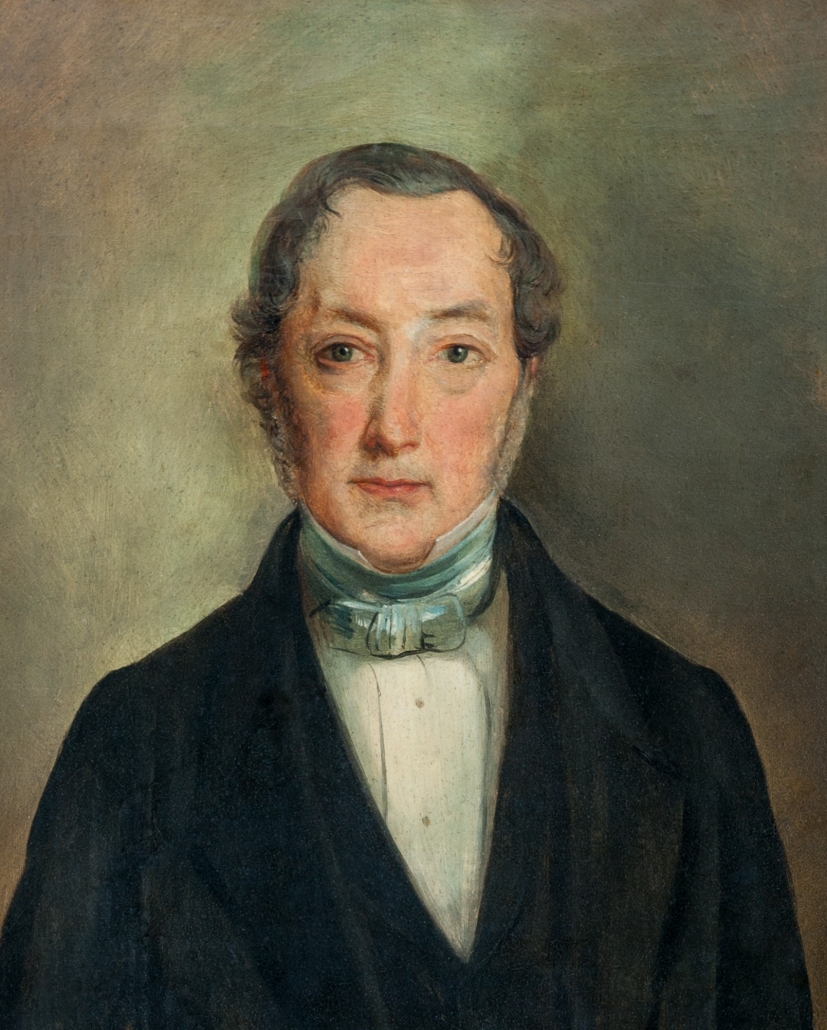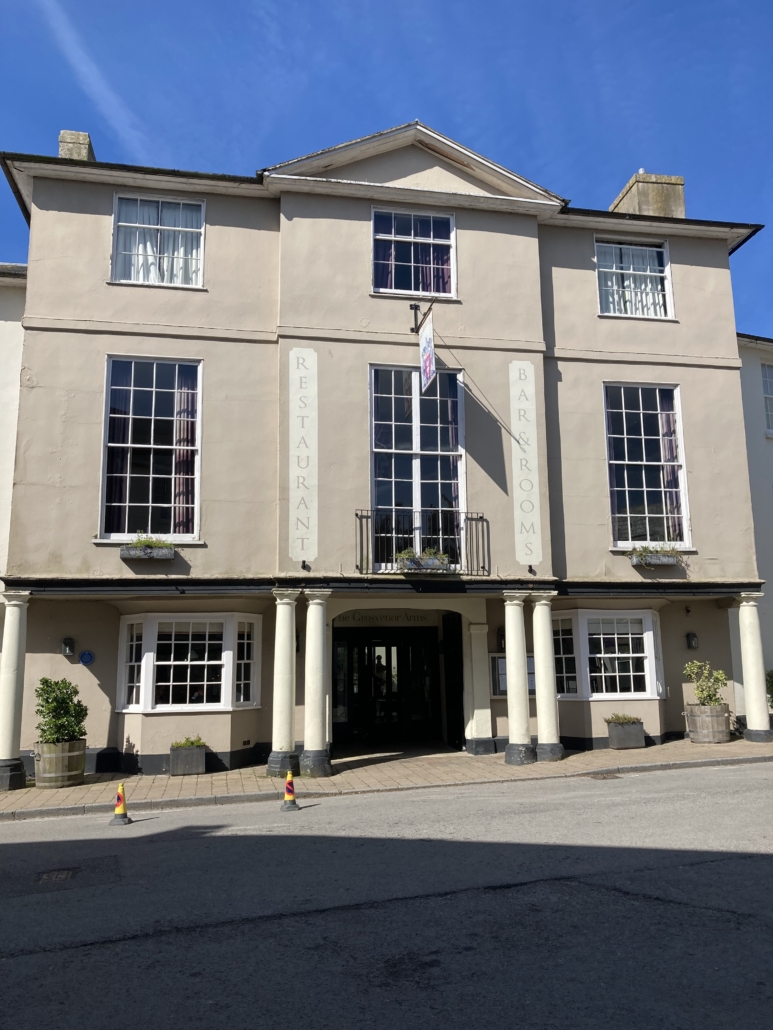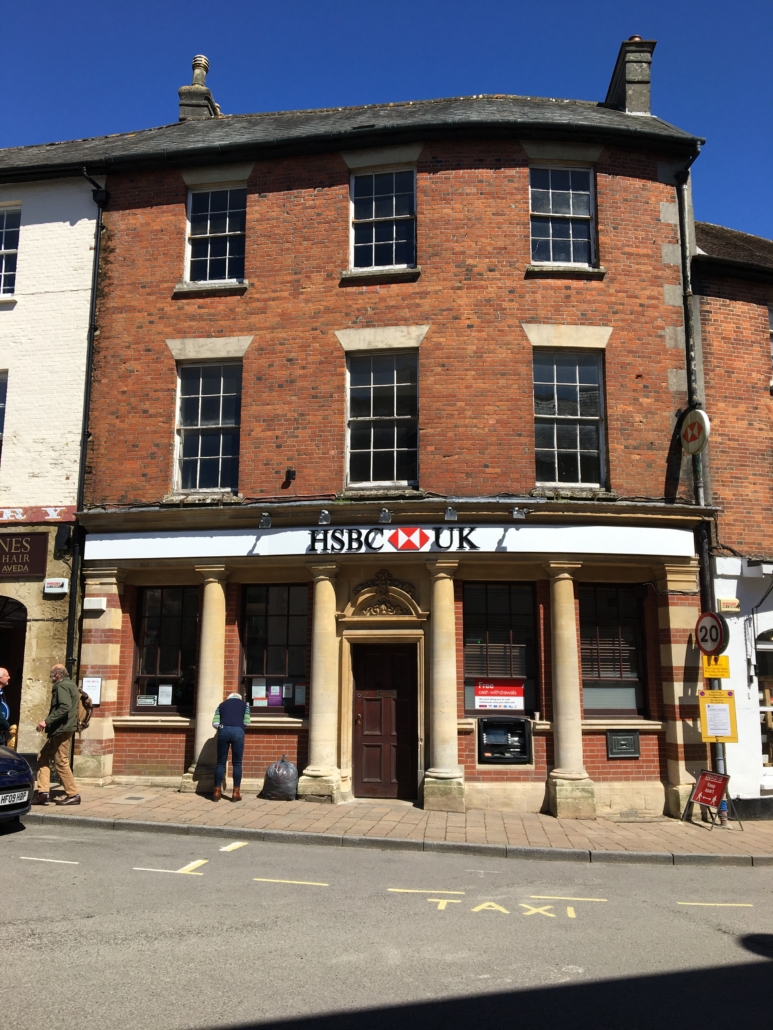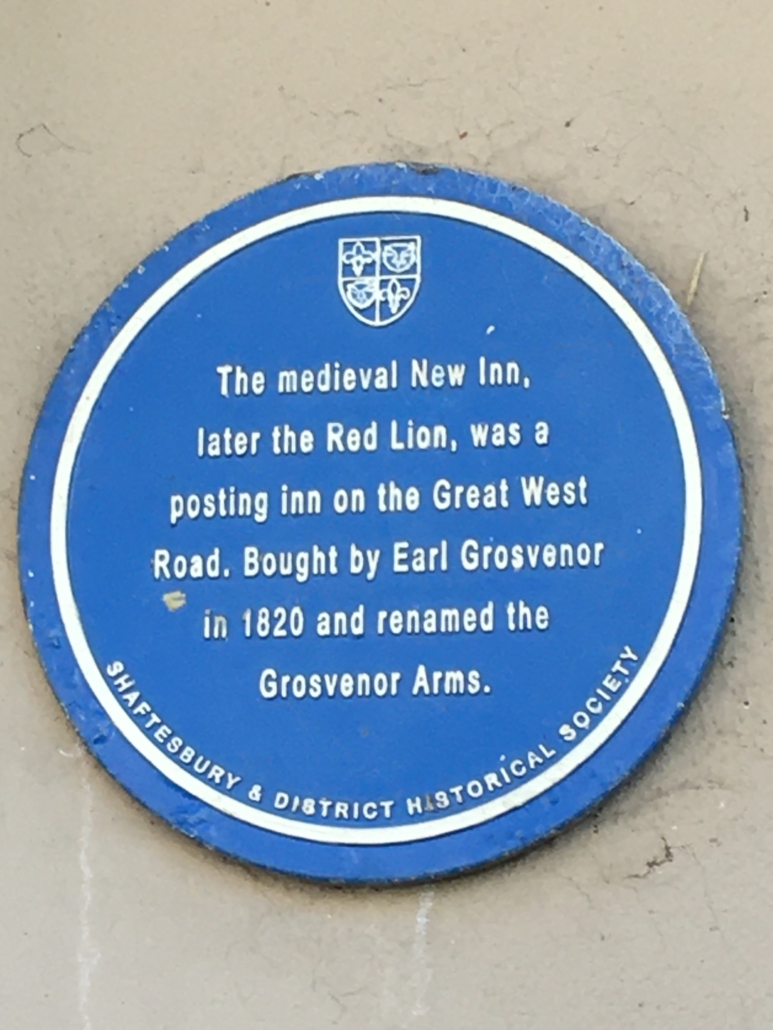The Turbulent Quaker of Shaftesbury and Riots in The Commons
The Commons in question being almost a public square where Shaftesbury High Street meets Bell Street. On opposite sides of the road, two key locations in a drama from the fractious summer of 1830: on the right the Grosvenor Arms, then a coaching inn and headquarters of the ruling Grosvenor interest; and facing it, the printer’s shop of John Rutter, later the Post Office (as in the early 1900’s Tyler photograph, with postal staff outside the door), and currently the HSBC Bank. In June 1830 the death of King George IV triggered a General Election. The unreformed borough of Shaftesbury was entitled to return two MPs. Since there was no Secret Ballot, the entirely male electorate had to declare their voting preferences in public to the Returning Officer. Polling took place in the new Town Hall (below), the gift of Earl Grosvenor in 1827.
Since the end of the Napoleonic Wars in 1815, low wages, poverty, repression and a lack of job security, had led to a growing resentment by the labouring classes towards the rich farm owners and land-owning class, who seemed not to care a jot for them or their welfare. The gulf between rich and poor seemed to have become greater than ever. Now, as the election approached, there was an underlying groundswell of anger amongst the people of Shaftesbury and surrounding area which, in July, 1830, came to the surface in the shape of violence.
John Rutter, printer of Shaftesbury, was a principled man who defended the oppressed and the disadvantaged. In 1819, he had published a document entitled ‘A brief sketch of the state of the poor in Shaftesbury’, which was a shocking and revealing account of the appalling conditions in which some of Shaftesbury’s residents lived. He also fought against the corrupt and nepotistic practices of Shaftesbury Borough Council. In 1830, much of Shaftesbury was owned by Lord Grosvenor. He was a powerful and influential figure, but he left the management of his estates to his representatives, or agents. His tenants knew that any demonstration of dissent against Lord Grosvenor’s interests, would likely lead to the local agents having them evicted from their homes. At that time, as well as ill feeling towards the Mayor of Shaftesbury and his attorney, Philip Chitty, there was a particular resentment towards Lord Grosvenor’s London agent, a man named John Jones. The Grosvenor candidates for the two Shaftesbury seats, Edward Penrhyn and William Dugdale, might have expected to be returned unopposed. However, John Rutter and his colleagues proposed their own candidate, Francis Knowles, who was a reformer, known to support causes such as the abolition of slavery, religious tolerance and legal reform.
Towards the end of July 1830, speeches were being given in Shaftesbury’s Commons, with Lord Grosvenor’s candidates and supporters speaking from the balcony of the Grosvenor Arms Hotel. On Monday the 26th, July, rival groups gathered, and it was clear that most of the crowd was against the electoral system and Lord Grosvenor’s agent, John Jones. Boos and hisses and calls for Jones to go home, led to scuffles, with sticks being used as weapons. Another cause for concern and target for the crowd, was a man named William Swyer, who was not only Mayor of Shaftesbury, but also one of Lord Grosvenor’s local agents, and the Returning Officer for the election. Many suspected that the result would be rigged.
The population of Shaftesbury was 2,742 at the time, but only 315 men were eligible to vote. Polling took place over four days from the 3rd, August and, by the third day, Francis Knowles was trailing in 3rd place. A huge crowd, said by some to be over 10,000 people, gathered in Shaftesbury’s Commons and surrounding streets, and there was much unrest amongst them. In order to try and placate them, Knowles addressed the crowd, expressing confidence in the final triumph in the cause of liberty. After this, most of the crowd dispersed.
However, about 200-300 people, mostly consisting of women and younger men, went to John Rutter’s premises on the Commons. John Rutter addressed them outside and asked them all to retire peaceably to their homes, which most of them did. There was a significant amount of intoxication and, despite John Rutter’s plea, many of the young men carried on drinking until about 10 pm, when some of them started throwing stones at the windows of Grosvenor supporters. A carriage was destroyed and then, at about 11pm, the Grosvenor’s gates were rushed by more than 50 men, who got in and broke windows and kicked in doors. The innkeeper of the Grosvenor Arms, Mr Edwards, reported that over 100 panes of glass were broken. He said that the Grosvenor was under attack until two or three in the morning. One witness, Robert Burridge, stated that in passing by the Grosvenor Arms after midnight, ‘he was called a spy, knocked down twice, and had his collar broken’.
Next morning, the Commons was a scene of devastation; but all was quiet. The army had been summoned, but 44 men of the 2nd Dragoons arrived too late from Blandford the day after the disturbances. Two of them escorted John Jones from the town. Following the trouble, Mayor Swyer had five men arrested, charged with ‘Feloniously rioting’ and sent to Dorchester gaol. They were Charles Willmot aged 25, Stephen Dean aged 22, Charles Hoskins aged 23, all labourers of Shaftesbury; Charles Jenkins aged 23, a sawyer, and Nehemiah Davidge aged 20, a blacksmith of Donhead St. Mary. The result of the election was 169 votes for Penhryn, 145 for Dugdale & 121 for Knowles. It did not go unnoticed that Mayor Swyer, in his role as agent for Grosvenor and Returning Officer, rejected 25 votes for Knowles which, had they been allowed, would have given him a total of 146 and, possibly, one of the two seats. John Rutter claimed that, ‘Had justice been done us, Mr Knowles would have been returned as the successful candidate’. Knowles claimed that he had lost ‘through a mass of corrupt influence’. On the 1st September, the five were released from gaol and made a triumphal return to Shaftesbury. As they passed through Blandford, bells were rung and in Iwerne Minster they were accompanied by a band. They stopped at the Half Moon and were then hauled in their carriage to the Commons, where they were met by a huge crowd of enthusiastic, flag-waving supporters. John Rutter regarded their release as a ‘Triumph over injustice, oppression and partiality’.
However, just the next day, there was more trouble to come ….
(This article was first read by the author, Dave Hardiman, on the Alfred Daily Podcast.)
Footnote: On the 2nd September 1830 a victory parade was to escort the successful Grosvenor candidates to a celebratory dinner at the Grosvenor Arms. Despite the drafting in of nearly 100 special constables, such serious disorder broke out that the Town Clerk was obliged to read the Riot Act from the balcony of the Grosvenor Arms. Yet more windows were broken. In October 1830 dozens of Shaftesbury residents, including John Rutter, received summonses to answer charges at the next Quarter Sessions in Dorchester. The story concludes ….


